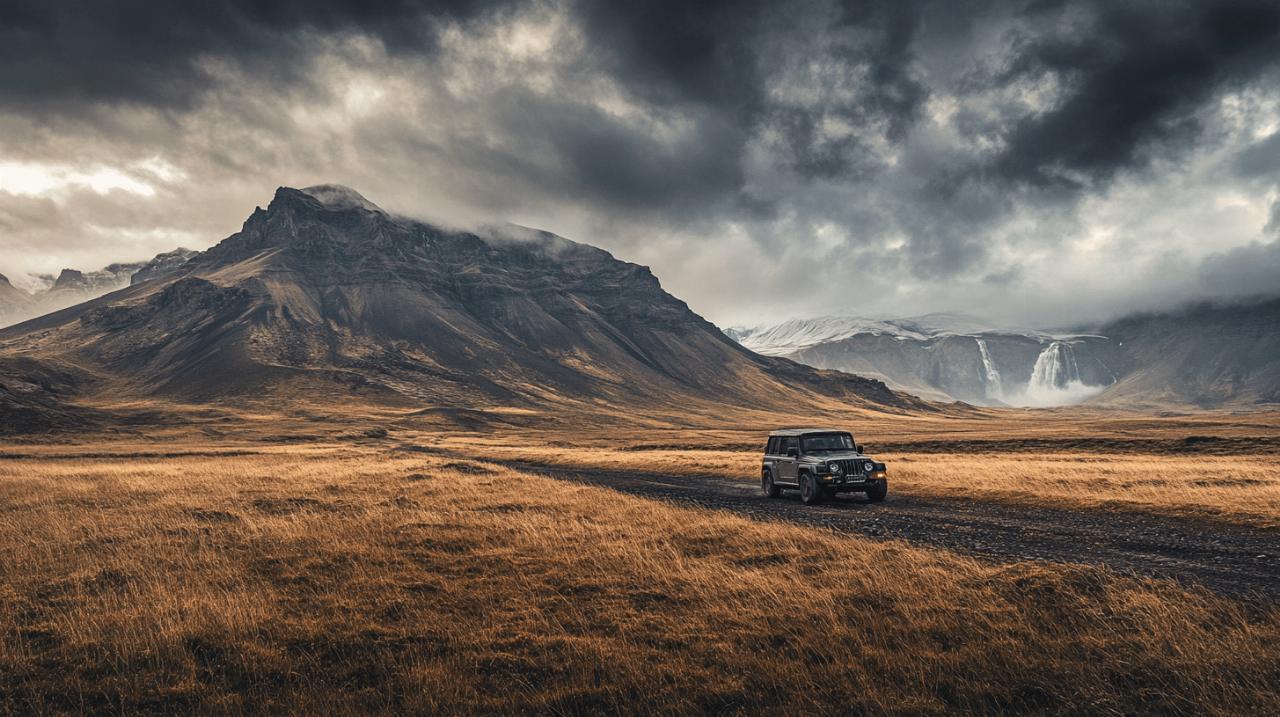Planning an adventure in Iceland requires careful consideration of your transportation needs. The right vehicle can make or break your experience in this breathtaking Nordic island. With its diverse terrain, unpredictable weather patterns, and unique road conditions, Iceland presents distinct challenges for travellers. This guide will help you navigate the process of selecting the perfect vehicle for your Icelandic journey.
Understanding iceland’s seasonal driving challenges
Iceland’s weather conditions vary dramatically throughout the year, directly impacting driving conditions and vehicle requirements. Making an informed choice about your rental vehicle is crucial for safety and enjoyment. Many travellers underestimate how significantly the seasons affect road accessibility in Iceland. You can find comprehensive information about seasonal driving requirements on https://www.auto-mobilpartnerschaft.de/ where experts discuss the specific challenges of driving in Nordic countries including Iceland.
Winter driving requirements and safety measures
Winter in Iceland transforms the landscape into a snow-covered wonderland, but it also presents serious driving challenges. From November through April, four-wheel drive vehicles become less of a luxury and more of a necessity. With only about four hours of daylight in mid-December, visibility is limited, making navigation more challenging. Roads can become icy and snow-covered quickly, requiring vehicles equipped with studded tyres for adequate traction.
Safety should be your primary concern during winter travels. Ensure your rental vehicle comes with winter-specific features like heated seats, engine block heaters, and adequate defrosting systems. Even with a capable vehicle, always check road conditions before departing and be prepared to adjust your itinerary based on weather forecasts. Many rental companies offer winter packages that include these essential safety features.
Summer road conditions and vehicle recommendations
Summer driving in Iceland, typically from May to September, offers more forgiving conditions but comes with its own considerations. While standard two-wheel-drive vehicles are generally sufficient for main roads and the Ring Road during summer months, unexpected weather can still occur. Summer is peak travel season in Iceland, particularly June through August, resulting in higher rental costs and limited availability.
For summer trips focusing on accessible areas and paved roads, economy cars can be suitable options, typically costing around $450 per week during peak season. These smaller vehicles offer better fuel efficiency, which is significant considering Iceland’s fuel prices are approximately double those in the United States. However, if your itinerary includes gravel roads or areas with rougher terrain, consider upgrading to a medium-sized car or small SUV for improved stability and comfort.
Navigating iceland’s diverse terrain
Iceland’s landscape varies dramatically from smooth highways to rugged mountain passes. Understanding these different terrains is essential for selecting an appropriate vehicle. The Ring Road (Route 1) circumnavigates the island for 1,322 kilometres on mostly paved surfaces, while other routes present more challenging conditions requiring specialized vehicles.
F-roads and highland exploration necessities
Iceland’s F-Roads, primarily located in the Highlands, represent some of the most challenging driving conditions in the country. These mountain roads are typically only open during summer months and legally require four-wheel drive vehicles. Standard cars and even some smaller SUVs are prohibited on these routes for safety reasons. If exploring the Highlands is on your itinerary, you’ll need to invest in a proper 4×4 rental.
Highland-capable vehicles range from basic 4×4 SUVs starting around $600 weekly to premium options like the Toyota Land Cruiser Arctic 4×4 at approximately $2,373 per week during peak season. For the most demanding terrain, specialized vehicles such as Land Rover Super Defenders with 37-inch tyres are available for around $3,749 weekly. These vehicles provide the ground clearance and traction necessary for crossing unbridged rivers and navigating rough volcanic terrain safely.
Coastal and urban driving considerations
Iceland’s coastal routes and urban areas present different challenges than the Highlands. While these areas generally don’t require specialized vehicles, other factors become important. Coastal areas can experience strong winds, making larger vehicles more stable but potentially more difficult to handle. When parking near the coast, always position your vehicle facing into the wind to prevent damage to doors when opening them.
In urban areas like Reykjavík, parking can be limited and expensive, making smaller vehicles more practical. If your trip primarily focuses on the capital region and nearby attractions, compact cars offer adequate performance while being easier to manoeuvre in tight city streets. Additionally, electric vehicles are becoming increasingly popular options for urban and coastal driving, though they require planning for charging stops, especially in more remote coastal areas where charging infrastructure may be limited.
Regardless of your vehicle choice, comprehensive insurance is essential when driving in Iceland. Standard coverage should include Gravel Protection (GP) at approximately $10 per day and Sand and Ash Protection (SAAP) at around $15 daily. These specialized insurance options address Iceland’s unique hazards that standard credit card insurance policies often exclude. Taking thorough documentation of your vehicle’s condition through photos and videos upon pickup can prevent disputes about damage when returning your rental.

